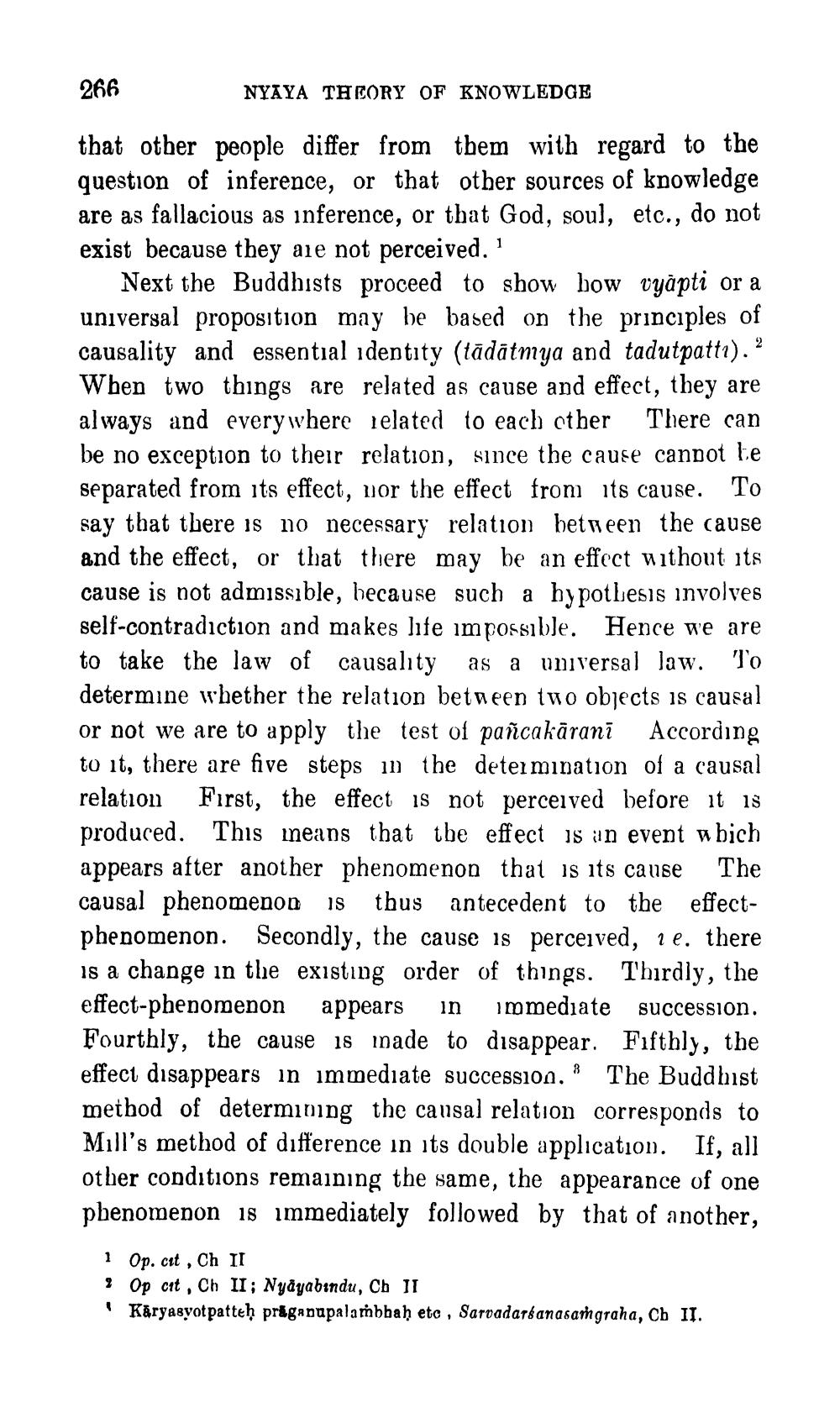________________
266
NYAYA THEORY OF KNOWLEDGE
that other people differ from them with regard to the question of inference, or that other sources of knowledge are as fallacious as inference, or that God, soul, etc., do not exist because they are not perceived."
Next the Buddhists proceed to show how vyāpti or a universal proposition may be based on the principles of causality and essential identity (tādātnya and tadutpattı). ? When two things are related as cause and effect, they are always and everywhere related to each other There can be no exception to their relation, since the cause cannot te separated from its effect, vor the effect from its cause. To say that there is no necessary relation between the cause and the effect, or that there may be an effect without its cause is not admissible, because such a hypothesis involves self-contradiction and makes life impossible. Hence we are to take the law of causality as a universal law. To determine whether the relation between two objects is causal or not we are to apply the test of pañcakāranī According to it, there are five steps in the determination of a causal relation First, the effect is not perceived before it is produced. This ineans that the effect is an event abich appears after another phenomenon that is its cause The causal phenomenon is thus antecedent to the effectphenomenon. Secondly, the cause is perceived, ie. there is a change in the existing order of things. Thirdly, the effect-phenomenon appears in immediate succession. Fourthly, the cause is made to disappear. Fifthly, the effect disappears in immediate succession. The Buddhist method of determining the causal relation corresponds to Mill's method of difference in its double application. If, all other conditions remaining the same, the appearance of one phenomenon 18 immediately followed by that of another,
1 Op.cit , Ch IT ? Op cit , Ch II; Nyayabındu, Cb II
Karyasyot patteh pråganapalambbaḥ etc , Sarvadarśanasarngraha, Cb II.




